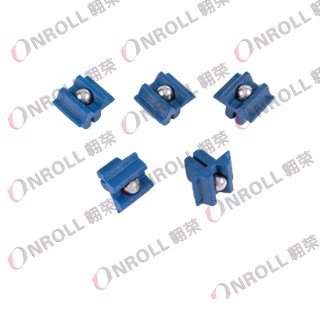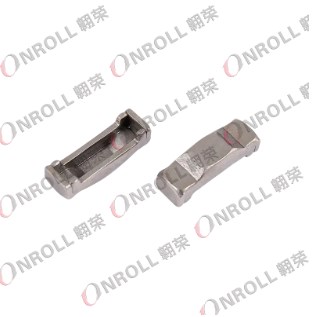Product Consultation
Your email address will not be published. Required fields are marked *
Cold Heading Agricultural Machinery Parts: A Foundation for Durability
Aug 06,2025What should you know about synchronizer guide block assembly?
Aug 06,2025Why Bus Gearbox Parts Are Critical for Vehicle Performance?
Aug 06,2025Commercial Vehicle Gearbox Parts: A Comprehensive Guide to Market Trends and Maintenance
Aug 06,2025In the modern automotive industry, the transmission, as the core device for power transmission, directly impacts the vehicle's fuel economy, dynamic response, and driving comfort. The design and manufacturing of passenger car gearbox parts determine vehicle performance under various operating conditions. Amidst increasingly fierce competition in the global automotive market, a deep understanding of the structure and function of transmission components has become a core skill in automotive R&D and maintenance.
Core Function of Transmission Parts
The core function of passenger car transmission components is to convert the high-speed, low-torque output of the engine into a torque and speed combination suitable for driving the wheels. This process relies on the precise coordination of key components such as gears, bearings, synchronizers, and housings. Each component requires not only high mechanical strength but also excellent wear resistance and reliable transmission efficiency to ensure vehicle stability during long-term, high-load operation.
Structurally, the design of transmission components must balance transmission efficiency and durability. Gear tooth profile accuracy, bearing load capacity, synchronizer meshing smoothness, and oil seal sealing performance are all crucial factors influencing overall transmission performance. At the same time, material selection and heat treatment processes directly impact component lifespan and noise and vibration levels.

Gear System: The Core of Power Transmission
The gear system is the driving force behind the transmission, and its precision and rigidity have a direct impact on the driving experience. Modern passenger cars feature multi-gear designs, requiring gears to maintain stable meshing under high speeds and transient load fluctuations. Gears are typically made of high-strength alloy steel and undergo precision machining processes such as carburizing, quenching, and grinding to enhance their wear and fatigue resistance.
The synchronizer and gears work together to ensure smooth, jarring shifts. The friction rings and sleeves within the synchronizer must achieve an optimal balance between friction coefficient, heat resistance, and wear resistance to ensure smooth and reliable shifting.
Bearings and Shafting: Precision Support and Power Transmission
The bearings and shafting within the transmission fulfill the dual functions of power transmission and component support. Bearings not only support the rotation of gears and shafts but also withstand a combination of radial and axial forces. Passenger car transmissions typically utilize a combination of roller bearings and spherical bearings to optimize load capacity and rotational precision. The key to shaft system design is to transmit torque while minimizing wear and energy loss. The shaft material and heat treatment process directly affect its strength and rigidity, and are also crucial for gear meshing stability. Proper bearing arrangement and lubrication system design can significantly improve transmission life and operating efficiency.
Casing and Seals: Dual Functions of Protection and Heat Dissipation
The transmission housing not only supports the components but also provides protection and heat dissipation. High-strength aluminum alloys or cast iron are often used in housing construction to ensure sufficient rigidity and impact resistance. The internal housing design must consider lubrication channels, heat dissipation structures, and installation space to ensure that the gears and bearings operate under optimal temperature and lubrication conditions.
The sealing system ensures that lubricant does not leak under high pressure and high temperature, while also preventing the ingress of dust and impurities. The material selection and craftsmanship of components such as oil seals, gaskets, and sealing rings are crucial to transmission reliability and durability.
Lubrication and Cooling Systems: Ensuring Efficient and Stable Operation
The lubrication and cooling systems are crucial for efficient operation of passenger car transmissions. If frictional heat generated by gear meshing cannot be dissipated promptly, it can cause component temperatures to rise, impacting mechanical performance and service life. High-performance lubricants circulate through gear clearances and oil channels, reducing friction and wear while also dissipating heat and keeping the transmission operating within the optimal temperature range.
Modern automatic transmissions or dual-clutch transmissions also utilize oil pumps and coolers to further optimize temperature control. Scientifically designed lubrication circuits and pump flow rates can improve transmission efficiency and extend component life.
High-Precision Manufacturing and Testing Technology
With increasing demands for automotive performance and comfort, the manufacturing precision of passenger car transmission components continues to improve. Gear machining utilizes CNC grinding and tooth surface lapping to ensure meshing accuracy. Bearing and shaft machining utilizes precision turning, heat treatment, and vibration testing to achieve high reliability and long life.

Modern transmission manufacturers also widely utilize testing methods such as coordinate measuring machines and gear meshing test benches to conduct comprehensive component inspections. Through precision manufacturing and rigorous testing, the quality of transmission components is guaranteed, thereby enhancing the vehicle's power transmission efficiency and driving comfort.
Passenger Car Gearbox Parts are the core components of a vehicle's powertrain. Their precision design, high-quality materials, and advanced manufacturing processes directly impact a vehicle's power performance, fuel economy, and service life. With the continuous advancement of automotive industry technology, Passenger Car Gearbox Parts will continue to develop towards higher efficiency, intelligence, and lightweighting, providing higher-level powertrain solutions for the future automotive market.
Your email address will not be published. Required fields are marked *

(+86)-191 0581 0729
(+86)-137 5850 1558

